Category
Popular Articles
- AI (12)
- Android (38)
- App Suggest (4)
- Apple (15)
- Apple TV (2)
- Bluetooth (3)
- Cars (2)
- ChatGpt (1)
- Chrome (2)
- Did you know? (1)
- E-Commerce News (1)
- Ecommerce Websites business (7)
- Electronics Shopping (5)
- Fashion Tips (3)
- Gaming (4)
- Google Gemini (3)
- Hair Care Tips (2)
- How to (13)
- iCloud (1)
- Infotainment System (1)
- Iphone (101)
- Job Posting (1)
- Lifestyle (3)
- Mac (20)
- Mobile Games (1)
- Netflix (1)
- Online Shopping Websites (2)
- Personal Finance Management (3)
- Product Reviews (3)
- Roku TV (4)
- Samsung (9)
- Shopping Tips (10)
- Spotify (1)
- Tech (93)
- Windows 11 (19)
- Zero Waste (3)
Discounted Products
-
 Leo Creation 144 TC Cotton Double Jaipuri Prints Flat Bedsheet(Pack of 1, Blue, Gree, Red, Grey, Light Grey)
Leo Creation 144 TC Cotton Double Jaipuri Prints Flat Bedsheet(Pack of 1, Blue, Gree, Red, Grey, Light Grey)
₹2,999.00Original price was: ₹2,999.00.₹329.00Current price is: ₹329.00. -
 Home Garage 210 TC Cotton King Floral Fitted (Elastic) Bedsheet(Pack of 1, Grey)
Home Garage 210 TC Cotton King Floral Fitted (Elastic) Bedsheet(Pack of 1, Grey)
₹999.00Original price was: ₹999.00.₹299.00Current price is: ₹299.00. -
 Goodrik 140 TC Cotton Double 3D Printed Flat Bedsheet(Pack of 1, Brown)
Goodrik 140 TC Cotton Double 3D Printed Flat Bedsheet(Pack of 1, Brown)
₹499.00Original price was: ₹499.00.₹229.00Current price is: ₹229.00. -
 GLOBALSHOP 350 TC Microfiber Double Floral Flat Bedsheet(Pack of 1, Multicolor)
GLOBALSHOP 350 TC Microfiber Double Floral Flat Bedsheet(Pack of 1, Multicolor)
₹1,250.00Original price was: ₹1,250.00.₹263.00Current price is: ₹263.00. -
 RisingStar 250 TC Microfiber King Printed Fitted (Elastic) Bedsheet(Pack of 1, FITTED-ROUND-CIRCLES-PREMIUM)
RisingStar 250 TC Microfiber King Printed Fitted (Elastic) Bedsheet(Pack of 1, FITTED-ROUND-CIRCLES-PREMIUM)
₹2,299.00Original price was: ₹2,299.00.₹299.00Current price is: ₹299.00. -
 Home Garage 210 TC Cotton King Floral Fitted (Elastic) Bedsheet(Pack of 1, Fitted Black Green)
Home Garage 210 TC Cotton King Floral Fitted (Elastic) Bedsheet(Pack of 1, Fitted Black Green)
₹1,299.00Original price was: ₹1,299.00.₹299.00Current price is: ₹299.00. -
 Home Garage 180 TC Cotton King 3D Printed Flat Bedsheet(Pack of 1, White)
Home Garage 180 TC Cotton King 3D Printed Flat Bedsheet(Pack of 1, White)
₹999.00Original price was: ₹999.00.₹229.00Current price is: ₹229.00. -
 Home Sizzler 153 cm (5 ft) Polyester Room Darkening Window Curtain (Pack Of 2)(Floral, Maroon)
Home Sizzler 153 cm (5 ft) Polyester Room Darkening Window Curtain (Pack Of 2)(Floral, Maroon)
₹799.00Original price was: ₹799.00.₹299.00Current price is: ₹299.00. -
 Panipat Textile Hub 152.4 cm (5 ft) Polyester Window Curtain (Pack Of 2)(Solid, Aqua)
Panipat Textile Hub 152.4 cm (5 ft) Polyester Window Curtain (Pack Of 2)(Solid, Aqua)
₹1,899.00Original price was: ₹1,899.00.₹299.00Current price is: ₹299.00. -
 Home Sizzler 214 cm (7 ft) Polyester Semi Transparent Door Curtain (Pack Of 2)(Floral, Maroon)
Home Sizzler 214 cm (7 ft) Polyester Semi Transparent Door Curtain (Pack Of 2)(Floral, Maroon)
₹1,199.00Original price was: ₹1,199.00.₹399.00Current price is: ₹399.00. -
 Home Sizzler 153 cm (5 ft) Polyester Room Darkening Window Curtain (Pack Of 2)(Floral, Brown)
Home Sizzler 153 cm (5 ft) Polyester Room Darkening Window Curtain (Pack Of 2)(Floral, Brown)
₹799.00Original price was: ₹799.00.₹299.00Current price is: ₹299.00. -
 Stella Creations 214 cm (7 ft) Polyester Room Darkening Door Curtain (Pack Of 2)(Abstract, Brown)
Stella Creations 214 cm (7 ft) Polyester Room Darkening Door Curtain (Pack Of 2)(Abstract, Brown)
₹1,299.00Original price was: ₹1,299.00.₹449.00Current price is: ₹449.00. -
 Homefab India 152.5 cm (5 ft) Polyester Room Darkening Window Curtain (Pack Of 2)(Floral, Light Blue)
Homefab India 152.5 cm (5 ft) Polyester Room Darkening Window Curtain (Pack Of 2)(Floral, Light Blue)
₹1,199.00Original price was: ₹1,199.00.₹319.00Current price is: ₹319.00. -
 Urban Home 214 cm (7 ft) PVC Transparent Door Curtain Single Curtain(Solid, Off White)
Urban Home 214 cm (7 ft) PVC Transparent Door Curtain Single Curtain(Solid, Off White)
₹699.00Original price was: ₹699.00.₹203.00Current price is: ₹203.00. -
 Panipat Textile Hub 213 cm (7 ft) Polyester Door Curtain (Pack Of 2)(Solid, Brown)
Panipat Textile Hub 213 cm (7 ft) Polyester Door Curtain (Pack Of 2)(Solid, Brown)
₹1,199.00Original price was: ₹1,199.00.₹349.00Current price is: ₹349.00.
Affiliate Links
Promotion
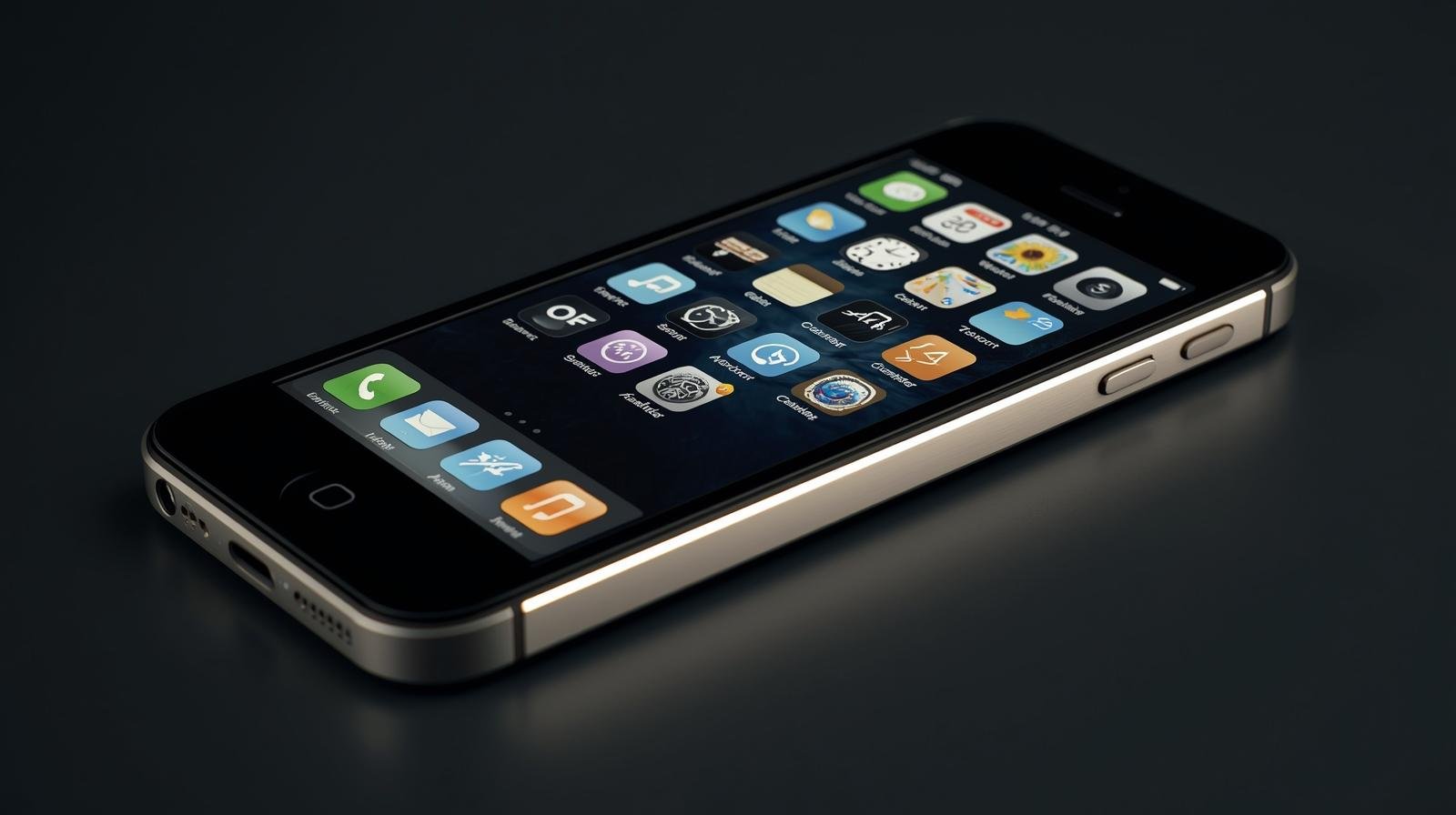
Hey friends, I’m Jessica, and today we’re diving into a fascinating question that I get asked all the time — “Was the iPhone really the first touchscreen smartphone?”
As someone who’s been an Apple user for years and a tech enthusiast long before the first iPhone launched, I can tell you — the story is a bit more complicated than most people think. While the iPhone completely changed how we think about smartphones, it wasn’t technically the first touchscreen phone.
Let’s rewind a bit and uncover the real history behind the touchscreen revolution, how Apple reshaped the industry, and what made the first iPhone so revolutionary despite not being the “first.”
Before iPhone: The Era of Early Touchscreen Phones
When the iPhone launched in 2007, the tech world was already familiar with touchscreens — though not in the sleek, fluid way Apple introduced.
Touchscreens existed decades earlier in PDAs (Personal Digital Assistants) and a few early smartphones. Let’s explore some key milestones that came before Apple entered the game.
📱 1. IBM Simon (1994) – The Real First Smartphone
Believe it or not, the world’s first true smartphone was the IBM Simon Personal Communicator, released way back in 1994 — 13 years before the iPhone!
It had:
-
A monochrome touchscreen
-
Apps like email, calculator, and calendar
-
The ability to send faxes and make calls
It was clunky and expensive (around $1,000), but IBM Simon deserves the title of the first smartphone with a touchscreen interface.
🖊️ 2. Palm and Handspring Devices (Late 1990s–2000s)
Before the iPhone, Palm Pilots and Handspring Treos dominated the “smart device” market. These PDAs had touchscreens that required a stylus, and users could manage contacts, schedules, and notes.
Some models like the Treo 650 even supported phone calls and internet access — though the experience was far from what we consider “smartphones” today.
🧠 3. Windows Mobile and Pocket PC Phones (2000–2006)
Microsoft’s Windows Mobile devices like the HTC TyTN and HP iPaq featured resistive touchscreens and supported emails, documents, and third-party apps.
Again, you needed a stylus for accuracy, and interfaces were not finger-friendly. These devices were loved by business users but not exactly built for everyone.
💼 4. LG Prada (2006) – The Stylish Competitor
Just months before Apple revealed the iPhone, LG launched the Prada (KE850).
It featured a capacitive touchscreen, which didn’t need a stylus — something even Apple’s team reportedly admired.
It looked elegant, supported multimedia, and even won design awards. But it lacked the fluid multitouch gestures and user-friendly OS that Apple’s iPhone introduced.
Apple’s Entry in 2007: A True Game-Changer
Now, let’s talk about the moment that changed everything — January 9, 2007, when Steve Jobs stood on stage and said:
“Today, Apple is going to reinvent the phone.”
The iPhone wasn’t the first touchscreen smartphone — but it was the first one that got it right.
Here’s why Apple’s iPhone became the true revolution:
✨ 1. The First “Finger-Friendly” Interface
Earlier touchscreen phones used resistive displays, meaning you had to press hard or use a stylus.
The iPhone introduced a capacitive multitouch display — smooth, responsive, and built for fingers.
You could pinch to zoom, swipe, and tap naturally — gestures that felt intuitive and fun.
🧩 2. iOS — The Real Secret Weapon
Apple didn’t just build hardware; they built an entire ecosystem.
The iPhone OS (now iOS) was designed to run smoothly with touch input — no tiny buttons, no stylus, no complicated menus.
Everything felt polished: icons, animations, and transitions. It was user experience perfected.
📶 3. Seamless Integration
From music (via iTunes) to web browsing (Safari) and email, everything worked together out of the box.
You didn’t need to install complex software or sync with a PC manually. For users, it just worked.
🧠 4. App Store Revolution (2008)
A year later, Apple launched the App Store, changing mobile computing forever.
Developers could build apps for millions of users — and suddenly, your phone wasn’t just a phone anymore.
It became your camera, map, diary, calculator, entertainment hub, and social connector.
So, Why Do People Think iPhone Was the First Touchscreen Phone?
That’s a great question — and the answer lies in impact, not invention.
While other companies created touchscreen phones before Apple, those devices were niche, complex, and not very enjoyable to use.
Apple didn’t invent the touchscreen — they perfected the user experience around it.
Think of it this way:
-
IBM Simon introduced the idea.
-
Palm and Windows refined it for business users.
-
Apple democratized it — making it beautiful, intuitive, and accessible for everyone.
That’s why most people feel like the iPhone was the first touchscreen smartphone. It’s the one that actually mattered to everyday users.
Fun Fact: Steve Jobs Didn’t Want a Stylus
In his 2007 keynote, Steve Jobs famously said:
“Who wants a stylus? You have to get them, put them away, you lose them. Yuck! Nobody wants a stylus.”
This philosophy shaped Apple’s entire touchscreen approach — natural interaction using your fingers.
While competitors were focused on specs, Apple focused on experience — and it worked brilliantly.
How iPhone Redefined the Smartphone Industry
Even though it wasn’t first, the iPhone reset the standard for what a smartphone should be.
After its launch, the market shifted dramatically:
-
Nokia’s dominance started to fade.
-
BlackBerry’s physical keyboard suddenly looked outdated.
-
Google reworked Android completely after seeing iPhone’s design.
Within a few years, every smartphone adopted touchscreens as the default input method.
That’s the power of Apple’s innovation — not inventing, but reimagining.
Today’s Perspective: Touchscreens Everywhere
Fast forward to now — nearly every device you use, from tablets to smartwatches and even cars, uses touchscreen interfaces inspired by that 2007 iPhone moment.
Even though Apple didn’t make the first touchscreen phone, it made the first one that made sense — elegant, responsive, and enjoyable.
It wasn’t about being first.
It was about being the best.
Jessica’s Final Thoughts
So, was the iPhone the first touchscreen smartphone?
👉 Technically, no.
👉 Practically, it changed everything.
Before the iPhone, smartphones were for tech enthusiasts or business users. After the iPhone, they became for everyone — simple, connected, and fun.
I still remember unboxing my first iPhone in 2008 — that magical feeling of sliding to unlock, pinching to zoom, and watching photos glide across the screen. It wasn’t just a phone; it was the future in my hand.
Apple didn’t invent the touchscreen — but it redefined human-computer interaction in a way that still shapes the world today.
Written by Bazaronweb
Latest Tech Articles
- Steps to Enable Emergency Restart in Windows 11

- 3 Easy Ways to Find Your Laptop Serial Number

- 5 Ways to Backup and Restore Registry Settings in Windows

- iMessage Not Syncing Between iPhone & Mac? 8 Proven Ways to Fix Account & Device Issues
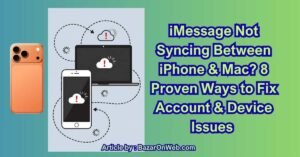
- Outlook Not Receiving Emails? 8 Proven Fixes for Windows, Mac & Mobile

Products
-
![Apple Watch Ultra 3 [GPS + Cellular 49mm] Running & Multisport Smartwatch w/Rugged Titanium Case w/Black Titanium Milanese Loop - M. Satellite Communications, Advanced Health & Fitness Tracking](https://bazaronweb.com/retailstores/wp-content/uploads/2025/09/apple-watch-320x320.jpg) Apple Watch Ultra 3 [GPS + Cellular 49mm] Running & Multisport Smartwatch w/Rugged Titanium Case w/Black Titanium Milanese Loop - M. Satellite Communications, Advanced Health & Fitness Tracking
Apple Watch Ultra 3 [GPS + Cellular 49mm] Running & Multisport Smartwatch w/Rugged Titanium Case w/Black Titanium Milanese Loop - M. Satellite Communications, Advanced Health & Fitness Tracking
-
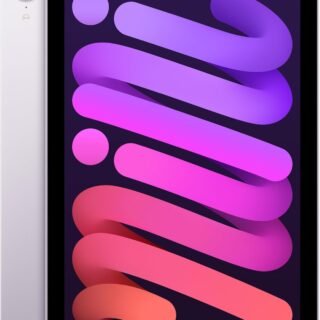 Apple iPad mini (A17 Pro): Apple Intelligence, 8.3-inch Liquid Retina Display, 256GB, Wi-Fi 6E, 12MP Front/12MP Back Camera, Touch ID, All-Day Battery Life — Purple
Apple iPad mini (A17 Pro): Apple Intelligence, 8.3-inch Liquid Retina Display, 256GB, Wi-Fi 6E, 12MP Front/12MP Back Camera, Touch ID, All-Day Battery Life — Purple
-
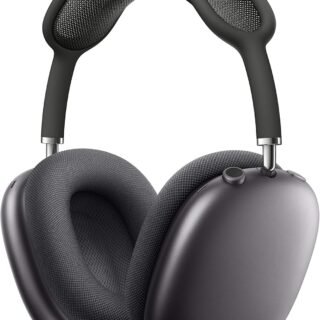 Apple AirPods Max Wireless Over-Ear Headphones, Active Noise Cancelling, Transparency Mode, Personalized Spatial Audio, Dolby Atmos, Bluetooth Headphones for iPhone – Space Gray
Apple AirPods Max Wireless Over-Ear Headphones, Active Noise Cancelling, Transparency Mode, Personalized Spatial Audio, Dolby Atmos, Bluetooth Headphones for iPhone – Space Gray
-
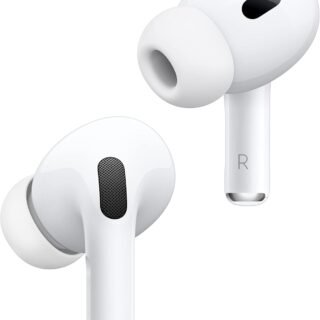 Apple AirPods Pro 2 Wireless Earbuds, Active Noise Cancellation, Hearing Aid Feature, Bluetooth Headphones, Transparency, Personalized Spatial Audio, High-Fidelity Sound, H2 Chip, USB-C Charging
Apple AirPods Pro 2 Wireless Earbuds, Active Noise Cancellation, Hearing Aid Feature, Bluetooth Headphones, Transparency, Personalized Spatial Audio, High-Fidelity Sound, H2 Chip, USB-C Charging
-
 Leo Creation 144 TC Cotton Double Jaipuri Prints Flat Bedsheet(Pack of 1, Blue, Gree, Red, Grey, Light Grey)
Leo Creation 144 TC Cotton Double Jaipuri Prints Flat Bedsheet(Pack of 1, Blue, Gree, Red, Grey, Light Grey)
₹2,999.00Original price was: ₹2,999.00.₹329.00Current price is: ₹329.00.
Leave a Reply